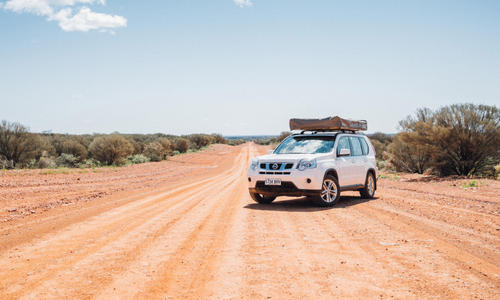
Quick Guide to Driving in Australia
Driving in Australia offers the opportunity to explore stunning landscapes and vibrant cities, but it's important to approach it with and understanding and respect for the road rules and conditions. By following this guide, you'll be well-prepared for a safe and memorable journey across this expansive and beautiful country.
Understanding Australian Road Rules
Licenses:
You'll need a valid driver's license from your home country to drive in Australia. If your license is not in English you'll still be able to rent from Campervan Village, but you may need an International Driving Permit (IDP) or an official translation when dealing with local authorities. You can get an IDP from your local automobile association before you leave. Make sure you carry both your license and IDP with you at all times when driving.
Key Road Rules:
Driving in Australia follows a set of rules and regulations that ensure safety on the roads. These rules are enforced by state and territory governments and can come with hefty penalties if not followed, so it's important to familiarize yourself with the specific regulations of the region you'll be driving in. Here are some key road rules to keep in mind:
- Driving Side: Like many other countries, Australia drives on the left-hand side of the road.
- Speed Limits: The speed limit is usually 50 km/h in urban areas, 100 km/h on rural roads, and 110 km/h on highways, unless otherwise indicated. Always observe posted speed signs.
- Blood Alcohol Limits: Australia has strict laws regarding drinking and driving, with varying blood alcohol limits across states and territories.
- Mobile Phone Use: Using a mobile phone while driving is illegal unless using hands-free technology. Touching your phone for any reason, even while stationary at traffic lights, can result in a fine.
- Seatbelt Laws: Seatbelts are mandatory for all occupants of a vehicle.
- Child Restraints: Children must be appropriately restrained in approved child seats or booster seats according to their age and size.
Etiquette:
Australians are generally friendly and laid-back people who enjoy a chat and a laugh. When driving, they appreciate courteous and respectful behaviour from other drivers. Some basic etiquette rules are:
- Use your indicators (turn signals) when changing lanes or turning.
- Keep to the left lane unless overtaking or turning right.
- Don't tailgate or cut off other drivers.
- Give way to pedestrians and cyclists.
- Don't honk your horn unless it's necessary to avoid an accident.
- Thank other drivers with a wave or a nod when they let you pass or merge.

Planning Your Route
Before embarking on your journey, it's important to plan your route carefully to ensure a smooth and stress-free drive. Consider the following factors:
Navigation Tools:
Australia is a huge country with diverse landscapes and attractions. You'll need a good map or navigation system to help you find your way around. You can use online maps or apps on your phone, but be aware that some areas may have poor or no internet coverage. It's always a good idea to have a backup paper map or guidebook with you, just in case. You can also ask the locals for directions or tips on where to go and what to see.
Fuel Stops and Rest Areas:
- Fuel Stations: Consider identifying fuel stations along your route ahead of time to ensure you have enough fuel for the journey. Always fill up before travelling to remote areas, and top up when you get the opportunity as fuel stations can be scarce.
- Rest Areas: Plan regular rest stops to prevent driver fatigue and stay refreshed during long drives.

Road Conditions and Hazards
Australia boasts diverse landscapes, ranging from bustling cities to rugged outback terrain. Understanding the various road conditions and potential hazards along your desired route will help you navigate safely.
- Wildlife: Be vigilant for wildlife crossing the road, especially at dawn and dusk. Kangaroos and other animals are an extremely common hazard in rural areas and may cause serious injury and/or damage to vehicles if struck.
- Weather Conditions: Australia experiences a range of weather conditions, from extreme heat to heavy rainfall and flooding. Check weather forecasts before traveling and adjust your plans accordingly.
- Road Trains: In rural areas, large road trains (long trucks pulling multiple trailers) are common. Exercise caution when overtaking or sharing the road with these vehicles.
- Road Closures: Roads may be closed due to weather conditions, flooding, or other hazards. Check for road closures before traveling and plan an alternative route if necessary.


Conclusion
By planning ahead and being aware of the road rules and conditions, you'll be well-prepared for a safe and enjoyable journey across Australia. If you're ready to start planning your road trip, check out our amazing campervan hire options and get in touch with our friendly team today!
Book Online Now